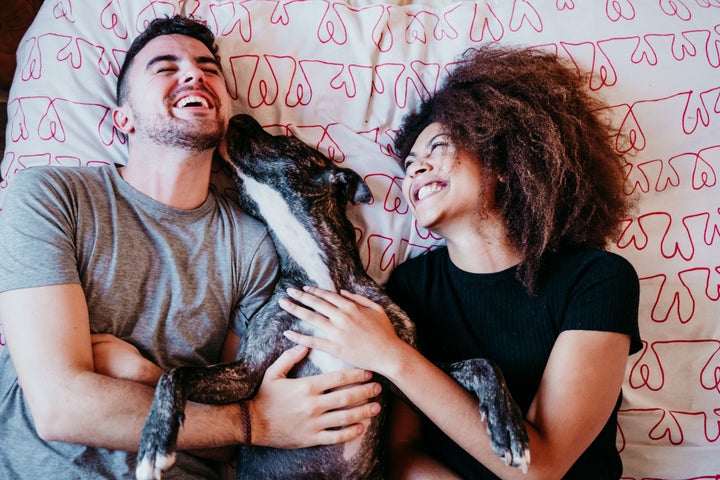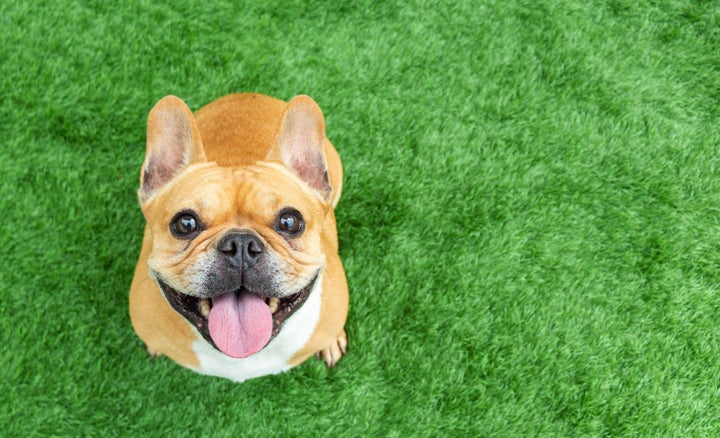
“If we have a wonderful romantic two-week break with our partner, and go back to work on a Monday morning, we’re going to miss that person and the overall experience,” explains Nick Jones, dog behaviourist. “I think it feels a little like that for our dogs as well.”
Lockdown has been nothing short of epic for dogs. Deeply social creatures that require and desire intense periods of bonding for their happiness and wellbeing, they’ve been spoiled by housebound owners marooned for weeks on the sofa.
Their loyal company has kept many of us humans sane too, as we morphed into new versions of ourselves, reliant on making the most of our lives at home.
But now lockdown is easing, and some of us are heading back into the office, that new (and blissful normal) is being disrupted, as dogs are inevitably being left for longer periods of time alone again. And according to Jones, who offers behavioural training for dogs across the UK, this whole period, particularly the transitioning from lockdown into post-lockdown life, is difficult for dogs.

Enhanced separation anxiety may be the biggest challenge to face dogs and their owners right now, says Jones, but not every dog will experience stress or mental health challenges.
“There are two groups,” he explains,“young dogs which were acquired during lockdown and have never really been left, and then more mature dogs that may have been used to being left prior to lockdown.
“And now they’re having to re-familiarise themselves with that old routine, just as I did when I started going back to work. I love my job but it took me a week or two to get into the swing of it properly.”
While some dogs may be badly affected, particularly younger dogs that have never experienced pre-lockdown life, others will be unfazed by the transition.
“In very mild cases, dogs may just do a bit of whining initially when left, and probably those lower end case dogs could be placated if we offered them something interesting to chew on in their owners’ absence, to create a distinction between the owner being home and not being home,” says Jones. “In essence we’re distracting the dog from the owner not being present.”
Conversely, warning-sign behaviour may include constant barking, soiling at home, and even trying to escape. “That’s when people tend to get more concerned about their dog and how they’re going to manage them,” he says.

Jones has some tips for helping dogs exhibiting symptoms of stress or upset – good to keep in mind if you’re a dog owner who fears their pooch may experience separation anxiety at some point over the coming months.
“The difficulty with canines is we can’t verbally reason with them and explain that they don’t need to worry, [that] the owner will be back shortly,” says Jones.
“But the good news is we can train dogs to be left alone for sensible periods of time ... gradual increments back towards the duration of how long we’re looking to leave the dog for.”
If your initial aim is to be able to leave your dog for two hours (most dogs shouldn’t be left for more than four hours), Jones suggests “starting off leaving the dog alone for five minutes, then 10 minutes, then 20, 30, 45 and so on, so they’re building up the body of the time they know they can leave them for.”
Gentle steps like this will prepare them for when their owners properly leave the house to return to work for one full morning, afternoon or evening at a time.
This may sound distressing for owners and Jones says that he has experienced a spike in requests for dog training on separation anxiety.
But he quick to add that “it’s not the end of the world for most dogs”. It’s all about reintroducing the dog to the new routine.
And the best way to do that, he says, is gradually.